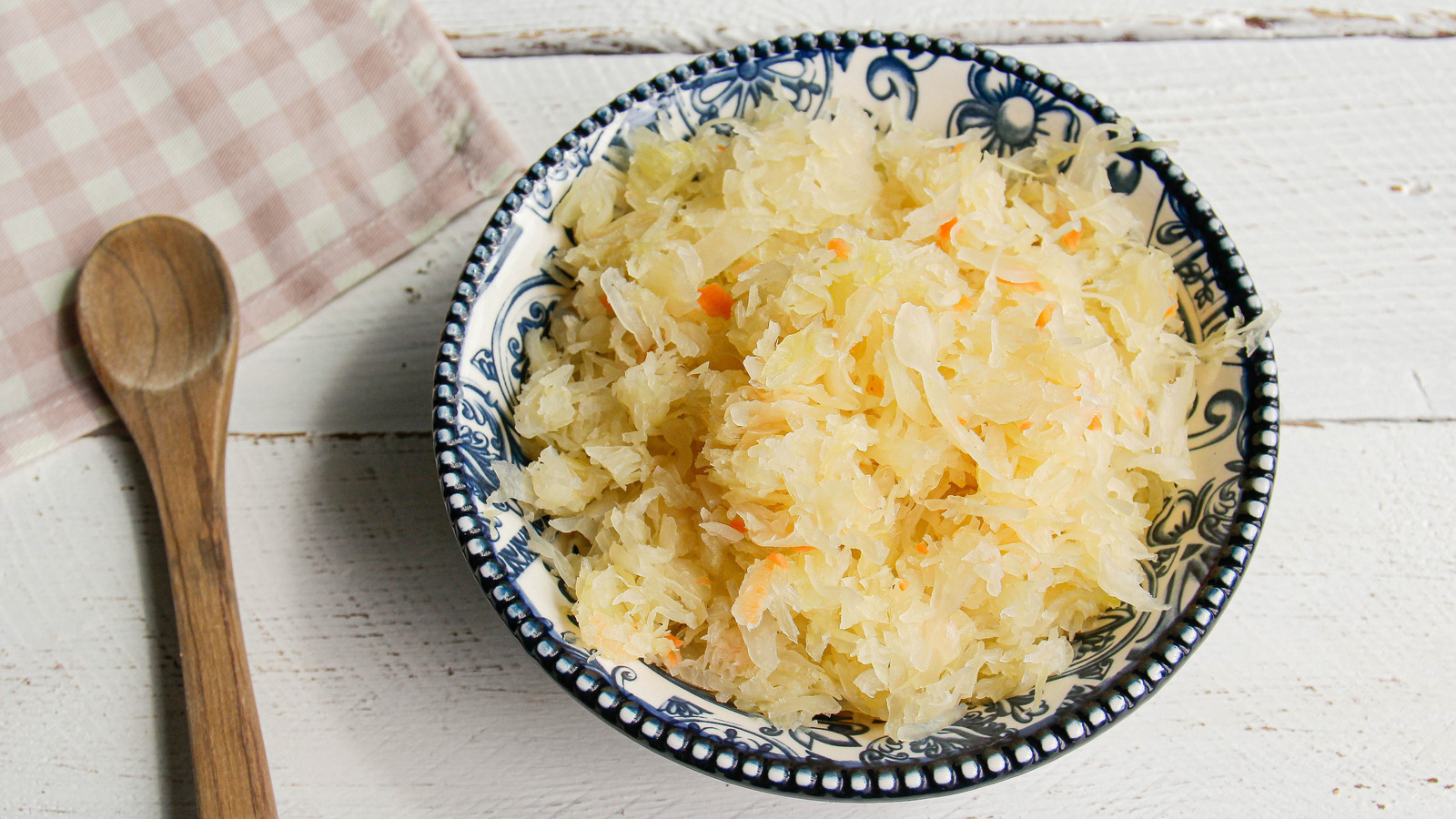We may receive a commission on purchases made from links.
For the unaware, sauerkraut has amazing heath benefits, and you should be eating more of it. The fermented cabbage is packed with probiotics and contains lots of vitamins and minerals. Along with being good for gut health and digestion, sauerkraut can support your immune system and brain health. While there are plenty of great flavors and brands available for purchase in stores, it’s so easy and inexpensive to make at home. However, not all types of cabbages are best-suited for making sauerkraut. We spoke with Sophie Sadler, the German food expert behind Dirndl Kitchen and the author of the cookbook “German Home Kitchen,” who told us that green cabbage is the best cabbage variety to use for making homemade sauerkraut. Here’s Sadler’s personal guide to making sauerkraut at home.
Similar to how napa or Chinese cabbage is best for making kimchi, green cabbage (known as white cabbage in Germany) is the most common cabbage used for making authentic sauerkraut according to Sadler. Traditionally, only green cabbage is used in Germany. Sadler explains, “We don’t blend cabbages when making sauerkraut in Germany.” She does also love making sauerkraut with red cabbage, which adds a bright purple pop of color to your dish. “Experimenting with red cabbage makes for a beautiful, less conventional version that’s so fun. I think shredding Kohlrabi and green cabbage together could also be a fun option,” says Sadler.
Green cabbage makes the most traditional version of sauerkraut
When it comes to prepping and chopping the cabbage, a knife is always an option, but Sadler says she loves using a mandoline for thin, even slices of cabbage, perfect for sauerkraut. She does however urge you to wear a protective glove while using a mandoline, as it’s easy to cut yourself while using the sharp tool. “I start by quartering the cabbage and cutting out the core,” explains Sadler. “I then cut the cabbage into wedges, just narrow enough to fit on the slicer. Any leftover pieces that don’t quite fit the mandoline, I chop up into small pieces using a sharp chef’s knife.” From there, the rest or the sauerkraut making process is easy. Knead the shredded cabbage with salt in a large bowl before transferring to sterilized jars, which then sit out at room temperature for at least a week to ferment.
When you’re ready to begin your homemade sauerkraut journey, start with any of our best sauerkraut recipes. If you’re short on time and aren’t able to make your own, look to our ways to make canned sauerkraut taste better so that you can improve a store-bought version to your liking. For inspiration on how to best use all of that homemade sauerkraut now that you’ve made it, here are some ways to add sauerkraut to your favorite dishes.






